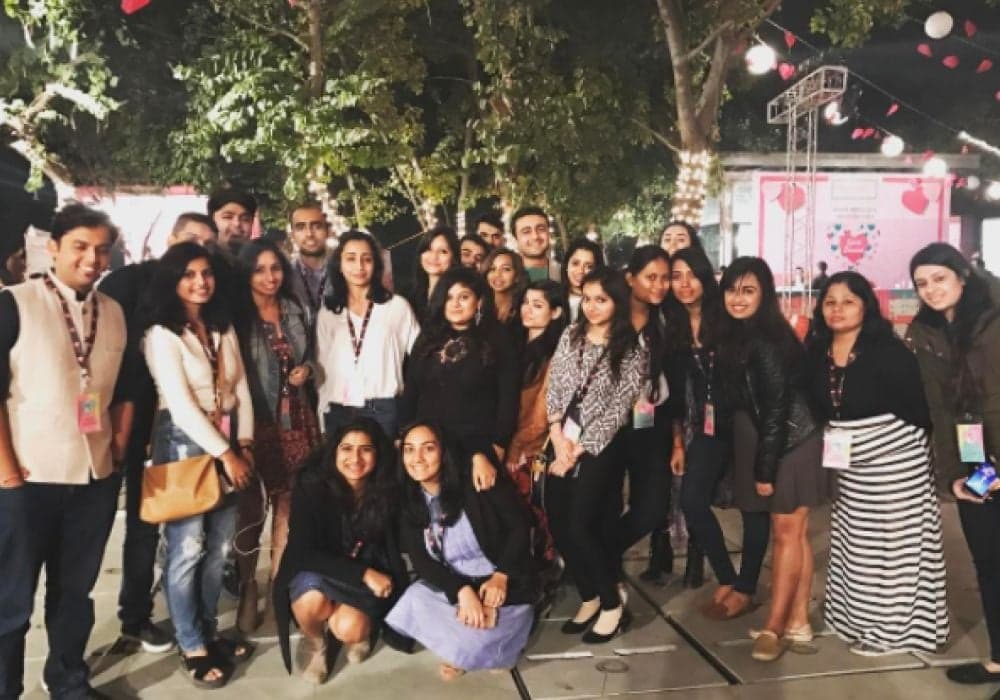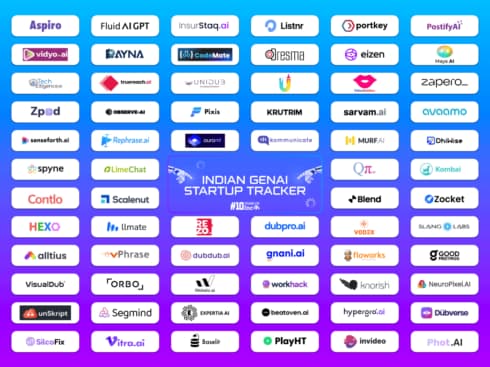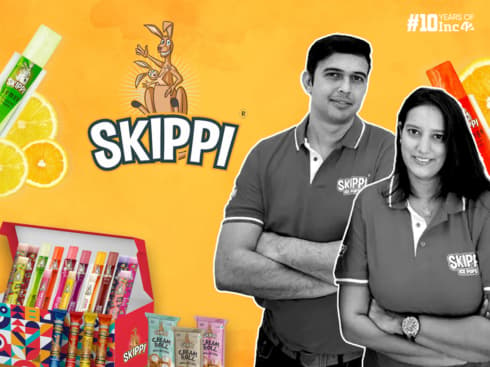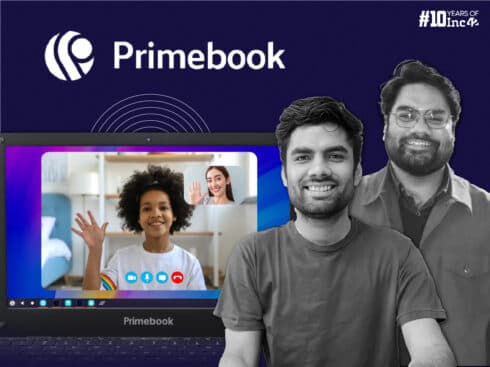POPxo Has Raised Funding From Kalaari Capital, GREE Ventures, 500 Startups And Others
Let’s face it. Everyone talks on the Internet and no one pays attention. The advent of digital media has been spurred by the space the Internet has to provide content in real-time, interactively. This means, when a topic resonates with someone, digital media enables them to talk back. Combining this idea of providing an interactive and exclusive platform for women to talk about all the things that matter to them across geographies, demographics and sensibilities is POPxo.
“POPxo has always envisioned itself as a space that provides content that speaks to women and girls, instead of talking down to them,” begins POPxo founder and CEO Priyanka Gill. The reason for this statement? Back when POPxo first launched in India in March 2014, there was no single website that was targeted specifically towards confident, educated women migrating from Tier II cities to urban cities in search of better jobs, better career opportunities and more.
Today, the women-centric digital media platform boasts of a monthly average of 10.18 Mn visits on content across its website, app. They also claim of 1.6 Bn monthly social media impressions according to the latest official statement from the company itself. It not only provides textual content in the form of articles, videos and how-to blogs, but also has a YouTube channel and has recently introduced a social media influencer-affiliate network called Plixxo to further its reach for women to talk, shop, and hang out – basically have the complete content experience right on their 5-inch screens.
The digital media startup also counts Kalaari Capital, The Chennai Angels, Japan’s GREE Ventures, and IDG Ventures as backers having raised a total funding of $5.5 Mn in three rounds, the latest one being in April 2017.
But, as with most startups, it’s the journey that matters as much as the destination, so let’s dive back to the genesis of POPxo and its evolution from a simple content website to a full-stack platform offering that it is today.
Rebranding From Estylista.com To POPxo India
 Priyanka has roots in both the UK and India and, so it was but natural that after graduating from King’s College, she wanted to leverage the Indian expat experience for her business venture.
Priyanka has roots in both the UK and India and, so it was but natural that after graduating from King’s College, she wanted to leverage the Indian expat experience for her business venture.
Priyanka launched Estylista in June 2013 along with co-founder Namrata Bostrom in the UK. “Namrata and I have always shared intellectual chemistry and our skills have complemented each other well. That was a key reason for us to work together.” The basic plan back then was to create content specifically aimed at the Indian diaspora – first and second generation expats who wanted to feel a virtual connection with India. “Estylista was started for Indian women living abroad and spoke specifically to their issues – be it beauty like the Style Council, lifestyle, relationships etc.”
As Priyanka puts it, they experienced ‘small traction’ in the first few months and were surprised to find that most of this traffic was coming from India. And so Estylista looked at India as a viable target market.
“Stuff like Cosmo, Vogue, Femina etc. existed back then. But there was not a concentrated digital media platform like there existed in the US and UK. No single homegrown publisher was producing digital-first content that was targeted exclusively for women at scale. So, we did a simple thing. We imagined a girl in India, coming from a certain background who wants to look a certain way and has certain issues she wants to explore.”
And thus, the POPxo brand philosophy was also born. A fun, informative, interactive, digital-first, content platform for women.
As Priyanka claims, the website was launched in March 2014 from the UK and had some 50,000 unique visitors in the first month itself.
Data + Content: The POPxo Scaling Mantra
POPxo claimed to have 1 Mn unique visitors in the first six months. And the thing to be noted for this kind of traction would be that, back then there were external factors such as Facebook courting website publishers actively in order to create more engagement with the publishers’ audience and bring them onto Facebook. Also, unlike the newly launched digital media platform, content that was specifically aimed at the modern, semi-urban millennial women was clubbed together in beauty and lifestyle portals or on digital versions of magazines such as Femina and Elle.
Refining the internal content process also played a part in achieving scale.
“We began looking at each piece of content as data, not just stuff that we put up on the website. This data led us to the learning that tone is very important when it comes to content.” She mentions body-positive language where skinny culture is discouraged, aspirational and inspirational articles as well as communicating the feeling that ‘POPxo is there for me, with me,’ as markers they focussed on.
The next aspect of the data focussed on the users themselves: deep profiling them in order to target certain kinds of audiences. Priyanka mentions five archetypes that they zeroed in on. These archetypes were divided among the 18-25 age group and the 25-40 age group. “Each article, be it about makeup, beauty, lifestyle, sex and relationships needed to talk to at least one or two of these archetypes to gain maximum traction.”
By October 2014, the POPxo team had grown to 15 people, almost all working on content. Two important milestones occurred in the first year of inception. They managed to raise $465K (INR 3 Cr) Seed funding from prominent investors such as Rajan Anandan. The company and founders moved base to Delhi in January 2015.
2015: Leveraging Video and Style Influencers To Build POPxo Reach
The unique thing about digital media platforms is that they have to operate like traditional publications – monetising still comes from ad revenues. Be it banners, emailers, links, all of which worked in broadcast and print media because they never essentially took away from the mass content-consumption experience. When it comes to the digital medium, however, content could not play hardball anymore.
Customising for audience and non-invasive advertising became the new advertising mantras. This is a restrictive environment, where user engagement counts (comments over clicks, repeat users versus page views) over anything else when it comes to showing revenue. “We were very clear on monetising from day one; revenue-generation is built into the ethos of the company. We tied up with brands for sponsored articles and did a lot of on-ground activities.”
She mentions the 2015 Lakme Fashion Week as an example where there was a POPxo Wall of Style for attendees to pose under. Currently, it counts more than 150 brands including Hindustan Unilever, Puma, Myntra, Tanishq, OPPO, L’Oreal, Fastrack and Jabong as clients.
A key workaround that POPxo was able to leverage while looking to monetise was making effective use of influencers. Their most unique proposition was the Style Council which had the tastemakers of Indian fashion such as Elle magazine’s Editor-in-Chief Nonita Kalra writing content for them right from the beginning.
This practice was carried forward initially with the POPxo Style Council (which has been discontinued now) followed by SuperBlogger network comprising bloggers from Tier II cities who were blogging from a long time and had a critical mass of followers. This was followed by creating a separate section for upcoming 50 bloggers and a strong pan-India campus network that now stands at 150 campuses.
“We wanted to become the one-stop place for brands when it came to native advertising. We offered them a mix of these four blogger networks and ensured the campaigns ran smoothly – from ideation to execution.”
Taking A Chance On Video, Keeping The Focus On English-Based Content
While it might seem like everything the startup touched turned into content gold, there were a few gambits that did not pay off. Wanting to leverage localised content i.e. Hindi, the team launched POPxo Hindi in early 2015.
But it did not scale the way they wanted it to. “Our focus got divided between the English and Hindi versions and it did not take off the way we expected it to,” Priyanka admits candidly. The portal still exists, but has not been updated since April 2016.
On the other hand, like fellow digital content companies like ScoopWhoop and FilterCopy, POPxo too got bit by the video bug and launched a YouTube channel in 2015. Much like the other platforms, video was an experiment. The content was produced by freelancers and uploaded on the channel back then.
The content stuck to the platform’s brand formula of revolving around makeup, lifestyle and occasionally tipping into advice territory. Priyanka admits this though. “Humour makes up a large part of our video content like ‘Annoying Things Every Skinny Girl Gets To Hear.’ Women-specific comedy turned out to be an untapped segment for us.”
The video arm of POPxo produces about five videos a day, short form lasting anywhere between 2-5 minutes. They also do brand-specific videos as part of the campaigns running on the platform (another monetisation avenue). As per an official statement, POPxo video averaged about 116 Mn video views per month in June 2017.
In fact, as Priyanka shares, video has been their biggest focus in 2017. The head of video, ex-NDTV, joined in September 2015. Priyanka mentions a few campaigns that have run exclusively on the video segment – such as POPxo Video Star Hunt. The video team has grown to become 35-member strong now.
Managing Content In Order To Ensure Readability
POPxo has 33 people in the textual content team. Priyanka informs me that 85% of the total number of employees – 102 (including marketing, operations) – are female. She does mention that she isn’t involved in the day-to-day of the content side, preferring to focus on the business and sales side of things.
Content is first divided into categories such as beauty and fashion-related, trending stories on women-centric topics. “Bollywood is a great launchpad for us. Movie and song releases get huge play on the platform. And we are very strong on not promoting gossip of any kind.”
After refining the kind of content that the website produces, POPxo took on the next challenge – that of creating an app. This was around the time that the company also raised $2 Mn in Series A from Kalaari Capital, IDG Ventures with participation from 500 Startups too. The investment was deployed to further built out the tech team and launch the POPxo app. “We were basically looking to build a community based on friendship where users could talk to each other. Engage the content experience on the app too.”
Priyanka reveals that the app, which is an enhanced version of the website, had 500K initial downloads.

The app’s content focussed on a Q&A forum, user-generated content in the form of polls (4 Mn a month at last count) to provide selective feedback – beauty advice, agony aunt relationship advice and dipstick surveys on things such as ‘Which lipstick colour looks better on me.’
In an earlier interaction with Inc42, Priyanka spoke about the shareability aspect of the content when it came to apps. “Our job is to give this content – be it on besties, boyfriends, lifestyle etc. on mobile phones, which is the single device to the gateway into our audience’s world. We have to ensure they tag and click on our content so we become part of their mobile world.” At present, a POPxo app user reportedly spends about 160 minutes a month on the app.
POPxo On Popping Open The Digital Media Space
Cracking marketing for digital media is very nascent in India. In fact, it would not be remiss in saying that the digital media startups are competing with Facebook, Google for generating revenue – the same spaces they also have to advertise in. Brands too are used to the legacy of viewing advertising – across traditional media which is print and broadcast. The concept of user engagement is one they are still grappling with.
“That’s always been our primary challenge,” says Priyanka. “Media consumption has changed drastically in a short span of time and brands need to keep up with it on two fronts – social media and user engagement. The mobile screen is the most important way to reach our audience and we are focussed on it.”
POPxo, while looking like a sugar-coated girlfriend experience has relied on using data (user profiling/researching content) and made it an iterative process to provide a seamless consumption experience. This process has been built out both internally and externally and leveraged by the marketing funnel and never taking user engagement for granted.
Perhaps, this is why Priyanka and team have undertaken their most ambitious project – that of creating POPxo World – where ‘women can read, watch, shop, and hangout’ all in one place. Through a judicious expansion of its influencer network and an affiliate shopping extension with Flipkart and Snapdeal, the company has expanded monetisation to include a ‘click-buy-pay commission’ segment.
As she puts it, “From the days of us having to approach brands to come onboard with us, now it is brands who want to partner with us. They come to us now if they want to engage with women because we are the platform for women in India, right now.”
Around this time, Namrata Bostrom, co-founder also parted ways with the POPxo team in March 2017. “Namrata had personal issues dividing her time between London and Delhi. The parting has been very amicable.” When asked about the impact this has had on POPxo she does add that, “You just go with it. And nothing stops the business from running.”
Dealing With Competition In Indian Digital Media
POPxo has also had a meteoric rise in catering to the new age Indian millennial, much like digital media companies such as Buzzfeed India, WittyFeed, ScoopWhoop, FilterCopy, MissMalini have managed to do in their respective niches. Buzzfeed India and WittyFeed focus on globally-appealing viral content, ScoopWhoop walks the fine line between news and entertainment while FilterCopy and MissMalini both focus on lifestyle and entertainment.
POPxo too falls in the lifestyle and entertainment category, focussing entirely on women, but as Priyanka states, “We are not news, nor are we gossip. We don’t cater to those users.” She also adds, “Right now, all of us are at par with each other. We happily co-exist and I have a healthy relationship with the other digital media founders too.”
But, it is not all hunky dory in the land of new-age digital media. India has some of the lowest digital ad rates in the world. eCPM for banner and video ads are a fraction of what you see in the West. For example, YouTube eCPM in India is around $3 for a given type of video versus $9-$12 in the US. In the native ad space, the difference is even starker.
Buzzfeed reportedly charges $30K-$40K+ per article for native ad content. In India this rate is currently around $3K-$4K for large publishers. Pricing should improve significantly in India but is unlikely to approach US levels. As a result, very high volumes will be required to offset lower rates. While these volumes are likely, startups have to build the technology and efficiencies to harness a high volume and low price point environment, leading to a concentrated battle between these startups for ad revenue share and user engagement.
If it comes down to it, POPxo has competition from ScoopWhoop’s women-centric portal Vagabomb which has a sizeable social media following, Times Internet’s iDIVA, HuffPost India Women. Within these parameters, POPxo’s positioning as a portal that has exclusive access and content for female users, – has a different kind of competition.
Magazines such as Cosmopolitan India, VOGUE, Femina, Elle and Savvy also deal in the same 18-45 age group demographic and provide content for them – be it beauty, entertainment or lifestyle. “But scale is what matters the most, isn’t it? How many people can you reach at any given point in time?” According to Priyanka, it is this positioning of the brand that has led POPxo to occupy a unique space in the ethos of Indian digital content.
Answering ‘What Indian Women Want’
There are global platforms such as Refinery29 and Jezebel which also cater exclusively to women. Jezebel has positioned itself as a mouthpiece for the go-getter aggressive woman with strong opinions, while Refinery29 has maintained a relatively centric position. Refinery 29 does however lay claim to being the largest platform for women users all over the world with a global Alexa ranking of 2,098.
Priyanka acknowledges that Refinery29 has the best traffic in their chosen demographic but that India and POPxo content is unique in a couple ways. “For one, it is about community access with us along with combining our women users for trends and insights. We have the data.” She also talks about how the Indian women’s sensibilities change with age and circumstance, far quicker than Western women.
“We are building this marriage between user behaviour, content engagement and what our users are saying in real-time to answer the age-old question ‘What Indian women want?’”
It is this philosophy that Priyanka and the POPxo team is banking on in the near future as they look to open an office in Mumbai, build out the sales machinery for more monetisation and use the app and social media to increase mindshare with the audience.
The new age, digital media platform for women also plans on breaking even on a monthly cash flow basis by FY ’18. POPxo seems to have the right kind of business and revenue-led approach to establish a lasting brand in an incredibly short amount of time. But, it is 2017 and just providing content is no longer enough to hold the attention of the user – men or women. Will POPxo be able to scale higher while retaining that most elusive of all metrics ‘user engagement’ will be a story worth following.
































 Ad-lite browsing experience
Ad-lite browsing experience